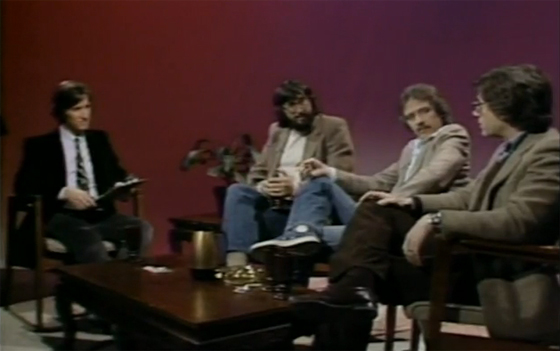David Cronenberg’s exploration of the founders of psychoanalysis is a dry but gradually absorbing film.
Adapted by Christopher Hampton from his own play, it examines the relationships between young psychiatrist Carl Jung (Michael Fassbender), his mentor Sigmund Freud (Viggo Mortensen) and the troubled patient Sabina Spielrein (Kiera Knightley).
Immediately opening with a jarring sequence of a troubled patient, it seems at first seems like a distant exploration of historical figures.
But as it progresses, we are actually in the realm of Cronenberg’s more overtly psychological work like Dead Ringers (1988) or Spider (2002), where the body horror he was once famous for is internalised into the mind.
The central dramatic thrust is how Jung’s relationship with Sabina created a rift with Freud.
Why is this significant?
Freud was – rightly or wrongly – one of the most influential figures of the twentieth century, using a method to examine taboo areas of sexual desires.
 Jung was to an extent his prodigal son, an early supporter of his work who treated – and then had an affair with – a woman who eventually became a significant psychoanalyst herself.
Jung was to an extent his prodigal son, an early supporter of his work who treated – and then had an affair with – a woman who eventually became a significant psychoanalyst herself.
In a sense this film puts psychoanalysis itself on the couch by examining the early desires, neuroses and secret impulses that helped shaped it.
The first part of the narrative deals with Jung’s treatment of Sabina during 1904 at his clinic in Zurich as he uses Freud’s theories to help cure his patient.
Two years later, a second patient as Otto Gross (Vincent Cassel) proves more troubling: he convinces Jung to unlock his own desires towards Sabina but also proves an important catalyst in his growing split with Freud (“never repress anything”).
Hampton’s screenplay manages to combine its own intellectual analysis with some sharply written dialogues between the characters.
There are bracing intellectual exchanges, which avoid feeling too forced, whilst the oncoming dread of global war hovers in the background.
The central drama is brought to life by four vivid performances who vividly transfer Hampton’s characters to the screen.
Fassbender convinces as an ambitious, intensely curious doctor whose intellectual hunger is mirrored by his desire to break away from the past.
Mortenson proves an effective foil, with a wry and controlled performance which suggests hidden depths to the older and more cautious Freud.
Knightley has the most difficult part, moving from awkward hysterics to lucid eloquence over the course of the movie, but it is a brave performance which she ultimately pulls off.
Perhaps the most interesting performance comes from Vincent Cassell, as his lack of screen time doesn’t diminish his character’s presence in the story or on the screen.
Given that this is a period film involving a lot of people talking in rooms, the temptation amongst some might be to dismiss it as some dry, analytical affair.
Cronenberg and his key technical crew have factored this into consideration and this is very handsomely staged film.
James McAteer’s excellent production design creates a believeable world; DP Peter Suschitzky shoots the action with precision and clarity; the editing by Ronald Sanders feels smoothly unfashionable in this age of chaos cinema and the green screen visual effects work (to create many of the backdrops) is mostly seamless.
Howard Shore’s typically brooding score is effective without being overpowering, but those familiar with his work might feel flashbacks.
Down the years Cronenberg has become associated with the ‘body horror’ genre, due to key films such as Shivers (1975), Scanners (1981) and The Fly (1987), his CV also reveals precise enquiries into the human mind.
A Dangerous Method applies a similar approach to the human mind and although it contains little of what the director is commonly ‘known for’ it mines dark emotional terrains.
In a 1986 documentary Cronenberg mentioned Freud when being asked about his films:
“Imagination is dangerous and if you accept – at least to some extent – the Freudian dictum that civilisation is repression, then imagination and an unrepressed creativity is dangerous to civilisation”
This not only describes Cronenberg’s method, which proved controversial with Crash (1993), but also possibly highlights his choice of material.
After all it seems natural that a master of presenting physical and mental anxiety would be drawn to the men who pioneered the diagnosis of many in the 20th century.
After his earlier work exploring the physical horror of the flesh (Rabid, Scanners, Videodrome and The Fly), his latest offers us a different form of mental dread.
Despite the period setting and beautiful backdrops of Vienna and Swiss lakes, there are elements of A Dangerous Method which feel like a chilly wind.
The conflicts in this story took place just as the neuroses of nation states were fomenting destruction on an unimaginable scale.
Little details reveal at lot: Jung and Sabina’s love of Wagner and Freud’s concern about Jewish identity are just some of ideas laced throughout the script which hint at darker problems to come.
Although it doesn’t immediately grip as a film, the slow-burn approach is partly why the ideas linger on after the ending, as we are left to reflect on how mental anxieties can lie at the root of human destruction.
A Dangerous Method opens in selected cinemas in the US from today and the UK on Friday 10th February
> Official website
> Reviews of A Dangerous Method at MUBi and Metacritic
> Find out more about Sigmund Freud and Carl Jung at Wikipedia

